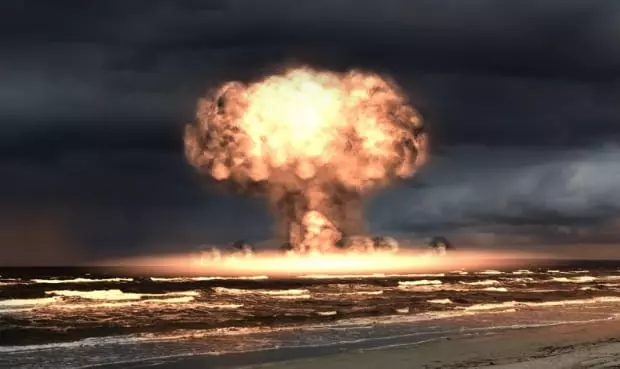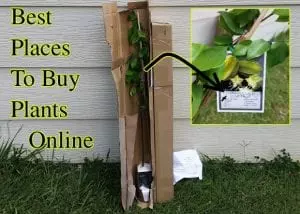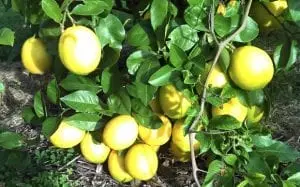Often people who grow their own produce, whether plants or animals, are considered to be doing so to save money, eat chemical free food, grow what they can’t buy, or as a hobby to help stay fit and healthy. However, few consider home grown food production (like a backyard vegetable garden) as a way to be prepared for a catastrophic event… well, maybe they should.
At this point in time and what we may call “the modern age” the world as we know, isn’t any safer than it was several hundred years ago; in fact, there are those who argue the world is much more dangerous and unstable today.

What is the threat?
Either through natural disasters, direct man-made threats via war and terrorism, or indirect man-made problems like climate change, and population explosions, it is obvious our world is under strain. Furthermore, there also seems to be a natural levelling of financial markets around the world at the moment as politicians try to grapple with the fall in consumer confidence and economic uncertainty.
In the recent past, world wars, cold wars, terrorism, natural disasters, and even extra-terrestrial influence or impact, has been the focus of doomsday predictions. However, the real threat to our lives might be much simpler and realistic.
With some global agricultural businesses standing just one bad year away from receivership those who rely totally on supermarkets for all their food should be concerned because after these big agri-businesses have bullied every small farmer out of the market they themselves are too big to fail. Unfortunately, being too big to fail doesn’t mean you won’t and when all your food is in one basket we know what happens when it’s lost.
Banana litmus test
Here in Australia a few banana seasons back we had a cyclone hit the Queensland coast and destroy massive areas of banana plantations overnight. Bananas went up in price from under $2/kg to over $18 across the whole country!

The consequences weren’t catastrophic or not what you would call a doomsday event; however, the losses to income were huge, some farmers went out of business, and most people simply left the bananas that were available to rot on the supermarket shelf as they were too expensive to buy.
Personally, we have our own banana trees growing and although I didn’t have bananas on demand my family and I did get our “banana fix” through our own produce during that period of uncertainty. In other words, because we were prepared and had some form of food security we were able to “ride-out the storm” and produce our own bananas rather than buy them.
Bananas are back to normal prices now but it was rather interesting how a shortage of just one type of fruit could cause so much anxiety in the community nation-wide. At the time, banana prices were a fixture on the nightly news and people started talking about the cost of bananas in general conversation …It almost drove me bananas!
Volatile world food supplies is a concern
The truth is, the above example of crop losses happens regularly and most of us don’t realise. Sure, the disruption to crops may not be as extreme all the time but food security is becoming more and more fickle as diversity wains under corporate greed, city centric populations, and rapid world population growth.
Crops fail all the time and once upon a time food markets weren’t overly affected with other small farms picking up the slack but now crop failings of massive, mega farms mean immediate spikes in prices on the supermarket shelf.
Therefore, if small and medium events (like weather) can make dramatic effects on financial markets and the cost of everyday commodities, what would happen if a major catastrophe happened and whole  seasons of crops world-wide were almost wiped out? Possibly starvation – because even if there was enough food to feed populations, it would be so expensive some people would not be able to afford it.
seasons of crops world-wide were almost wiped out? Possibly starvation – because even if there was enough food to feed populations, it would be so expensive some people would not be able to afford it.
In first-world countries starvation might not be prevalent right away due to major food losses, but the drop in living standards would be so disruptive that it would cause many other social and financial problems. Indeed the cost of living today is considered out of control already so just imagine how worse things could get if unforseen events albeit natural, violence, or financial hit us now.
Global food prices continue to rise
Occasionally we see a headline in the news saying global food prices have dropped for the quarter but more often than not food prices are rising. The world will need to produce something like 50-70% more food than it currently is to sustain the global population into 2050 and this means pressure on food prices. Over the next 12 months, global food prices are projected to rise by about 8% and my guess is that wages will rise about 3%.
Land shortage
Countries, like China, with huge populations are buying and investing in foreign farmland because they are running out of farming space in their own country. When countries start to become less self-sufficient in food and water sheer survival instinct can create a climate of war with any small trigger potentially sparking global conflict.
Food technology
Technology is playing an important role in working out how to feed a growing world. Nevertheless, the research, creation, and continuation of food-tech projects isn’t cheap. Consequently, governments are outsourcing the problem to the corporate world who are more interested in making money rather than looking after people so ensuring there won’t be a food shortage, due to population growth alone, in the future will be very costly indeed (we must assume).
Everyday food costs hurt the average family budget
Food costs are eating into the average home budget along with energy prices and outlays for other utilities and necessities. Good, healthy food is becoming more expensive to buy; in some cases, a Big Mac costs less than a big, beautiful, fresh mango – now that is a problem.
Most household budgets around the world are under immense pressure and once their fortnightly needs are met their budget is shot with not much or nothing left for discretionary spending.
Therefore, in absence of government help and with corporations scheming to make the divide between the haves and have-nots wider, we need to act to insure ourselves from a doomsday situation like out of control food prices. Thereby, ensuring we have enough coin to spend on the other things we need.
We can’t influence market prices but we can grow our own food…

This vegetable garden (above) is capable of sustaining several families if required and scaled up or down to suit the property it can be replicated almost anywhere.
As an individual or small property we can’t do much about petrol/gas prices, or even other energy costs like electricity (solar and wind can help though), medical costs are out of our hands, schooling, insurance, rates, rents, are mostly out of our control; however, we can grow food no matter what size property we have.
A backyard vegetable patch, herb garden, some fruit trees, a preserving kit, rainwater tank, and a few chickens, shouldn’t be something only old people do/have in retirement. Establishing your own food security in some way or another is something everyone who’s able should be doing!
We insure ourselves, our cars, our homes, our pets, for unforeseen losses yet so many of us assume food security is something farmers and governments need to worry about. And, in this day and age how often do governments around the world act in a timely manner during an economic or other crisis?
If a major food crisis hit first-world countries imagine how long it would take for governments to actually decide on what to do going off recent world events and the lack of decision making.
Those who are used to growing their own food will be ok. Bartering of goods between neighbours won’t be unusual – it will be back and flourishing. Plus, if you have some home-grown food to swap or sell, your backyard food garden will be seen as a valuable asset not lifestyle hobby.
Actually, with the prices of some food skyrocketing already just due to demand and seasonal availability some backyard crops can be very financially rewarding indeed. One mango tree just several years old is capable of producing dozens of fruit and one mango in store can cost $3. So, it’s not hard to do the maths to see an investment of $25 for a mango tree will keep paying you back many times over in the future.

Also, with a cheap dehydrator any excess mangoes can be dried for gourmet snacks in the offseason – ever priced dried mango? It’s expensive! Dare I say it, you can even eat mangoes green (Thai salads) now that’s a treat. Or, with a tiny bit of effort mangoes can be preserved through making chutneys or sauces etc and stored in a pantry (or in an underground doomsday chamber – if that’s your thing) for when required.
Some salad plants keep producing for months and months. Take silver beet for instance, it can be constantly cut back and it will continue to produce shoots from its hardy tuber time and time again all year in some climates. This highly nutritious and adaptable salad vegetable is no effort to grow in ground or pot, yet some people leave growing space on their properties bare and buy it at a premium from the supermarket chains.

This tub of silverbeet (above image) is 9 months old and still producing strong. 1 to 3 plants is all that's needed for most families.
Forget the cobra strike and prepare for a python squeeze
Doomsayers typically prepare for wipe-out scenarios like tornados, nuclear blasts, meteorite impact, and similar events by filling underground concrete chambers with canned food, flashlights, and hundreds of batteries. However, many of them neglect other disasters like a financial crash, depression, or agricultural terrorism, which can still cause chaos, panic, food shortages, and be a threat to their well-being. Having your own food security would be invaluable in these type of situations.
Whilst the doomsday scenario does sound a little alarmist there is some truth to it. At the end of the day, no one can predict what will happen in the future and recent world events has surprised us all. Therefore, there is no harm in planning and preparing for future problems whether sudden or gradual by taking whatever reasonable actions possible to insulate ourselves.
A modern food catastrophe may not necessarily be caused by war or some obvious event… It could simply be defined as sudden rises in food costs. In a world financial environment, such as the one we’re currently in, sudden rises in food could be the perfect storm and be very nasty indeed, especially for those who have stretched budgets already. The destruction may not be as sensational as a hurricane or as fast, nevertheless, it could be just as damaging to communities.
Sounding like a record now, but a safe guard plan to tackle an unexpected catastrophe, such as a food crisis, can be as simple as a small vegetable garden. It’s surprising how much food a backyard can produce with relatively little effort and by having an array of easy to grow edible plants always on hand it’s like having a living pantry just in case of emergency.

The image above shows bee attracting flowers front with a sweet potato trellis and corn behind then banana trees in the distant background
Conclusion
This will mean if the worst happens and a major catastrophe strikes, you and your loved ones will be in a better position to cope because you’ll have access to your own produce. Just the same, if the doomsday predictions don’t arise then at least you’ll be spending less on food and have more money to spend on the other things you and your family need or want.
So, if you haven’t done so yet, turn some of your backyard into a food producing doomsday stopper and protect yourself and your family from unexpected world catastrophes or just simple spikes in food prices. And, if hell on earth predictions come true (or aliens arrive) you’ll be sitting back smugly whilst others wither.
And, next time you see the supermarket lady on the TV Ad smiling insincerely as she informs, “due to unexpected weather conditions banana prices will be slightly higher this month…” You can smile back as I do and say to the telly, “I don’t care love, I grow my own bananas and mine cost much less.”
Feel free to use the comment section below to have your say. Also, please consider becoming a member of our forum where we can discuss this topic and others.
Thanks for reading and thanks for your support.
Look, and see the Earth through her eyes













